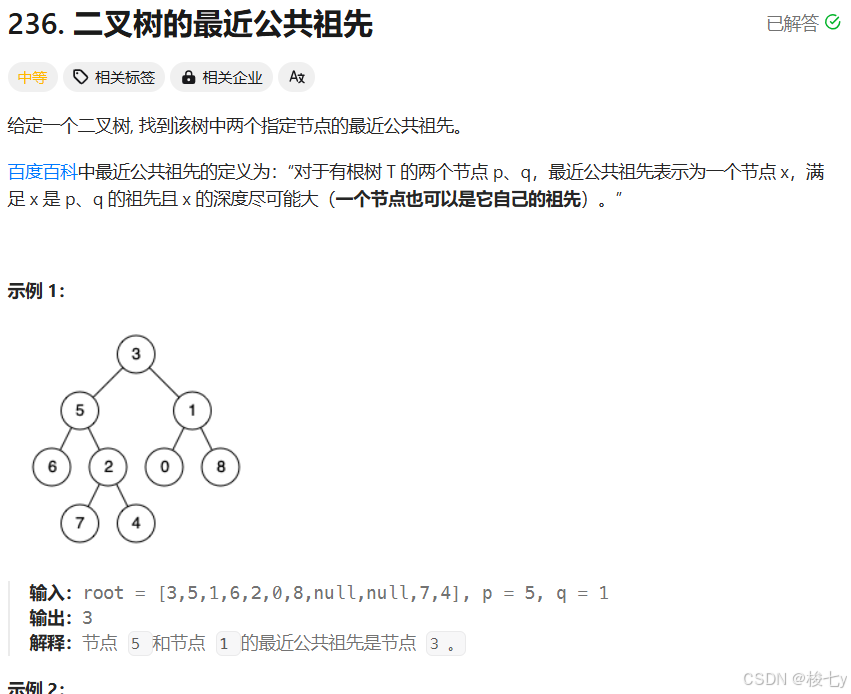
依旧只会用递归+栈。
栈记录当前遍历的节点,如果有一个节点已经被找到,则不往栈中添加新节点,并且每次回溯删除栈顶节点,每次回溯判断另一个节点有没有在栈顶节点的右边。
cpp
/**
* Definition for a binary tree node.
* struct TreeNode {
* int val;
* TreeNode *left;
* TreeNode *right;
* TreeNode(int x) : val(x), left(NULL), right(NULL) {}
* };
*/
class Solution {
public:
stack<TreeNode*> record;
bool search_p=0;
bool search_q=0;
TreeNode* result;
TreeNode* lowestCommonAncestor(TreeNode* root, TreeNode* p, TreeNode* q) {
if(root==nullptr) return result;
if(result!=nullptr) return result;
if(!(search_p||search_q)) record.push(root);
if(root==p) search_p=1;
if(root==q) search_q=1;
if(search_p&&search_q) result=record.top();
if(result) return result;
lowestCommonAncestor(root->left,p,q);
lowestCommonAncestor(root->right,p,q);
if(record.top()==root) record.pop();
return result;
}
};不过写完一提交,看着这个时空复杂度的击败比例感觉它仿佛在告诉我什么......


答案用的也是递归,不过它的时空复杂度比我的低了好多TT明明都是遍历每一个节点,为什么会变成这样..................
cpp
/**
* Definition for a binary tree node.
* struct TreeNode {
* int val;
* TreeNode *left;
* TreeNode *right;
* TreeNode(int x) : val(x), left(NULL), right(NULL) {}
* };
*/
class Solution {
public:
TreeNode* result;
bool exist(TreeNode* root,TreeNode* p,TreeNode* q){
if(root==nullptr) return 0;
bool l=exist(root->left,p,q);
bool r=exist(root->right,p,q);
if((l&&r)||(root==p&&l)||(root==q&&r)||(root==p&&r)||(root==q&&l)) result=root;
return l||r||(root==p)||(root==q);
}
TreeNode* lowestCommonAncestor(TreeNode* root, TreeNode* p, TreeNode* q) {
exist(root,p,q);
return result;
}
};